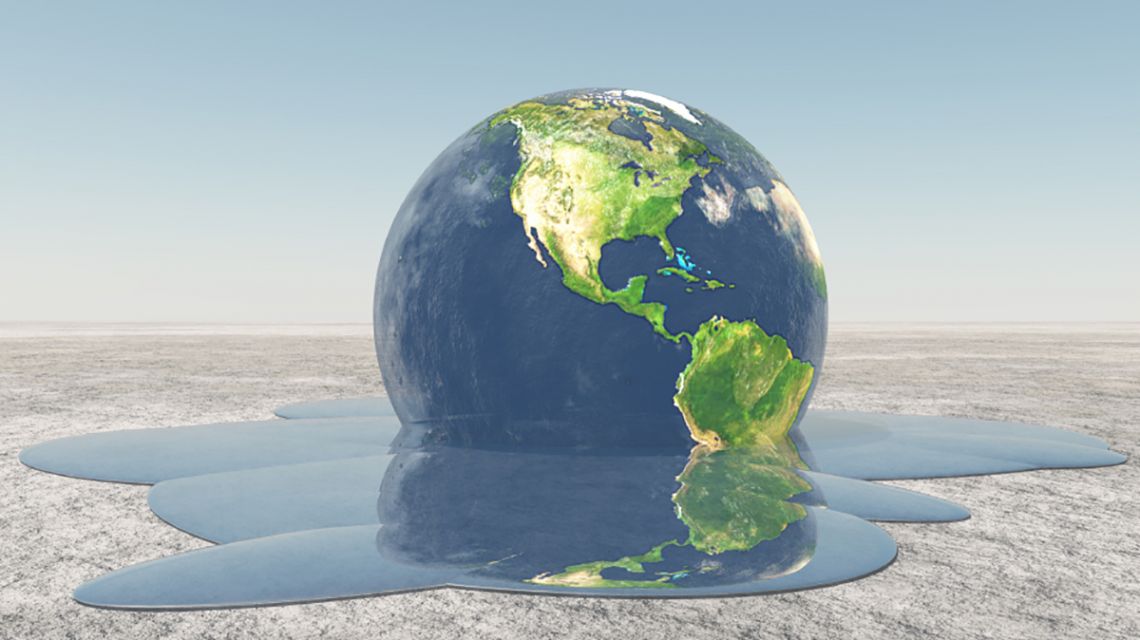
Latin American countries generate less greenhouse gas than the U.S., Europe, Asia and the Middle East, but are disproportionately suffering from the effects, through droughts, hurricanes and seasonal shifts. The World Bank estimates that 17 million people in Latin America will be forced to relocate within the next 30 years.
“No matter how we slice this, Latin America and the Caribbean have not been major contributors and still are not any of the largest contributors to greenhouse gas emissions that are contributing to the climate effects that we're seeing globally,” said Professor Sarah Bermeo. She was one of three Duke scholars who discussed how climate change affects the region, and why it drives migration, for the Gilman Climate Leaders Virtual Seminar Series.
The event series is hosted by Duke’s Energy Initiative and the Nicholas Institute for Environmental Policy Solutions and funded by the U.S Department of State.
Here are some highlights. You can also watch the full event here.
Sarah Bermeo, associate professor of public policy
ON DAMAGE DUE TO CLIMATE CHANGE
“We're seeing droughts and changes in rainfall … that are affecting the region, higher temperatures and heat waves which can be particularly deadly, especially if populations don't have the infrastructure in place to rely on air conditioning and other means to mitigate the impacts.”
ON THE IMPORTANCE OF FOREIGN AID:
“Latin America has historically not contributed that much to the climate change crisis that the globe is facing right now, but they're experiencing the impacts -- and in some ways, they're disproportionately experiencing the impacts compared to countries like the United States. One way that we might be able to smooth things out is through foreign aid, to help them be better able to adapt to the impacts that they're seeing, as well as to develop in a way that mitigates their future emissions but is still cost effective.”
“A lot of donor countries want to really focus on climate change mitigation, because as countries develop in Latin America, if they develop more cleanly that benefits all of us. And the countries themselves are saying, ‘Here we are experiencing droughts, floods, hurricanes, sea level rise and fires right now. We need help adapting to this. We need money for that, we didn't cause this problem, but we're living with the effects.' ”
Gabriela Nagle Alverio, Ph.D student in environmental policy
ON HOW CLIMATE CHANGE IS INFLUENCING MIGRATION:
“Without climate change piling on, we would see not only less migration but a different dynamic of migration, and by that I mean that the speed that climate change impacts are occurring makes it very difficult for people to adapt.”
“Consider that for generations your family has been growing certain crops and has learned the rhythm of the seasons and has a system for how and when to harvest. And suddenly those seasons are changing. And it's not just one season shifting and then going back to normal, but shifting permanently and continuously. It's very difficult to be able to adapt to that kind of rapid change in a way that in the short term still leaves you able to sustain your livelihoods and feed your family.”
“When people aren't able to adapt in place, they're going to be forced to move. Consider that you didn't have food to feed your family, or your entire home was destroyed. You might feel like you had no other choice but to move somewhere else.”
“What we typically see is rural-to-urban migration, where people head to the major cities in their country. When they face barriers and struggles and violence in that city, then we tend to see people turning to international migration.”
Christine Folch, assistant professor of cultural anthropology
ON LATIN AMERICA’S WORLD-LEADING ROLE IN RENEWABLE ENERGY GENERATION:
“In the United States we get about 20 percent of the electricity we consume through renewable energy resources. We get almost two thirds of the electricity consumed by burning fossil fuels. … There is only one region in the world where this is not the case, and that is Latin America. More than two thirds of the electricity consumed in Latin America comes from renewable energy resources, chiefly hydropower.”
“And so what that means is that as we're thinking about a post-fossil fuel world, as we think about the politics and economics that come from a transition from relying mainly on fossil fuels to moving to renewable energy resources, the area of the world that can show us the good, the bad and the ugly about what that might look like is Latin America.”
ON HOW CLIMATE CHANGE HAS AFFECTED THE ITAIPU DAM, WHICH GENERATES HYDROPOWER FOR BRAZIL AND PARAGUAY:
“These last few years, this part of South America has experienced a drastic drought as a result of anthropogenic climate change and also more local deforestation and environmental interventions. So the part upriver of the dam, which might affect the water level, is experiencing rapid deforestation for cattle and soy (farming). And Brazil and Paraguay are two of the world's top soy exporters and two of the world's top beef exporters. So what happens when you cut down trees to allow for grazing or raised soy is that you affect the water quality and the ability to produce electricity. And so we've seen drastically lower numbers in terms of electricity generated, and this produces an incredible stress, and this year, the drought continued in 2022 the numbers are getting lower and lower.”